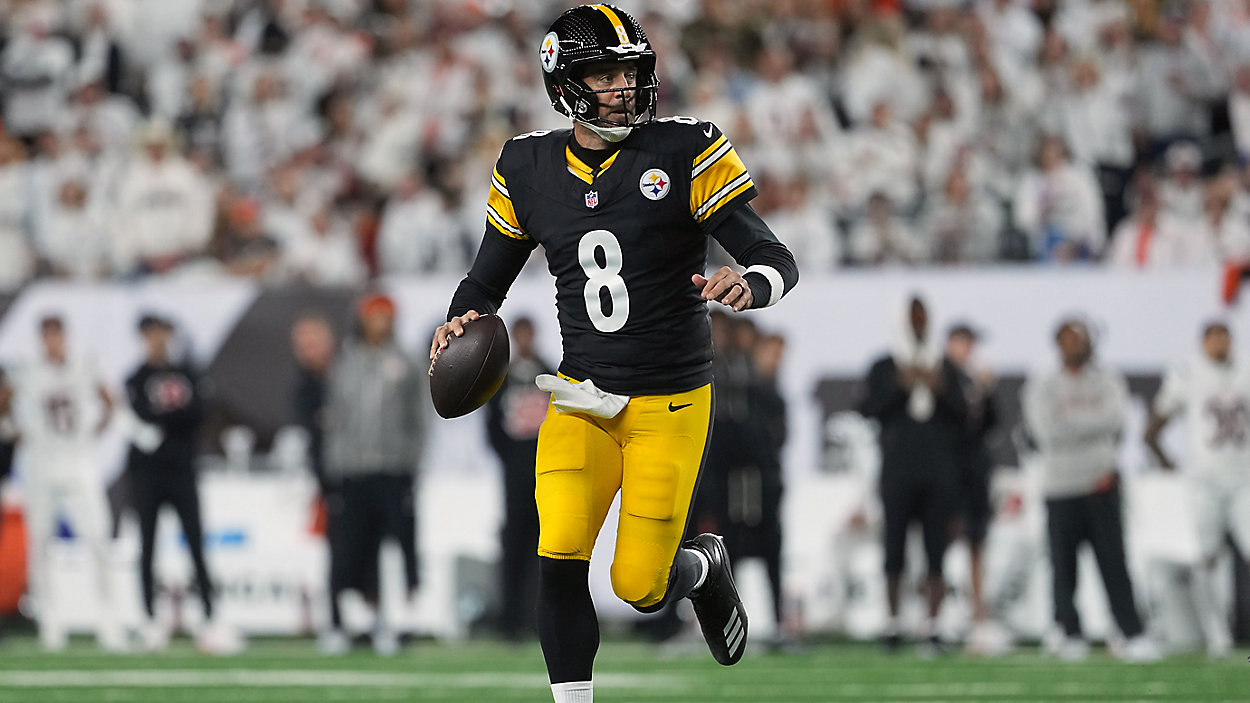
Quick Slant: SNF - One Final Act Before the Curtains Close
Mat Irby’s Quick Slant
I was living in the Dallas area during the week when Super Bowl XLV was played at Cowboys Stadium, now AT&T Stadium.
It snowed that week, then that snow thawed a little and turned into black ice, and then it snowed again—something like four or five inches, I’d guess. Working in the film industry meant I worked everywhere; that morning, I had to go all the way across town, and there were no snowplows in that part of Texas. I decided to get up about five hours early for a drive that would typically take a little over one; I figured, after I got there, I’d probably have extra time to kill, so I’d just sleep in the car a bit.
About 15 minutes into my drive, I had just barely made it to the highway, only blocks from my house. It wasn’t that there was too much traffic—there was nary a car on the road—but it was like trying to climb on the back of a kite and steer it. You sit in that seat as you always do and think you’re going to drive a car as you usually would, only to realize that the adorable little contraptions you would typically use to do that are now like toys made of plastic, wired to nothing. So, the vehicle is just going to take you wherever it takes you, and you’re as much a bystander as a participant. Around then, I realized: I might actually be late. In a moment of clarity, I went back home and called out.
At home, on the TV, I saw the sun peek out enough to affix it’s scalding stare at the grand glass palace sufficient to melt the bond that held up massive sheets of ice, which then slid helplessly down the domed silver façade and smashed to earth with the power of a semi-truck dropped from a B-2, breaking into bits like a vase plunged on marble.
Come Sunday, inside the space-age basilica, beneath the largest HD video board known to humanity, Rashard Mendenhall took a handoff in the fourth, as the Steelers crawled back from a 21-3 deficit, now down by four. He seemed to know what was coming before it did; he tensed his traps, visible despite his giant shoulder pads, bracing for an impact from DPOY Clay Matthews. When Matthews’ helmet met the ball, it popped up like it had been greased in Crisco, and the Packers recovered.
An author penning a cleaner narrative would have had the next drive be controlled—Aaron Rodgers stoic—stepping back and popping: five steps, throw, catch; three steps, throw, catch; five steps, throw, catch. But that’s not what it was.
Rodgers’ dropbacks were chaotic, his feet nervous. He was often drifting away from pressure as he let loose, overthrowing receivers or dumping down. His first downs were like painful inching, white-knuckled, arriving just on the other side of eight seconds on a bull named Hatchet. Then he shot a spear through traffic that smacked Jordy Nelson so straight and hard in the numbers that it ricocheted out of control and fell to the earth beneath his shaking head. But Nelson quickly made up for it, taking a deep slant straight from Bill Walsh’s playbook on a 38-yard tour from one hash to the opposite sideline, ending in a diving effort that fell just short of the pylon.
On the next play, Rodgers looked confounded, faking a handoff and glancing up to see flashing color. He stepped up to his 10 o’clock, even leaped a little—hard to say why—and landed in the embrace of multiple defenders, ushering him to the ground (in a shocking turn of events, he got up looking pissed at a teammate). But on the next play, he saw it right away; pump fake, then straight to the corner, where Greg Jennings was all alone. Jennings went down to a knee in prayer, and Rodgers went down as one of the greatest QBs of an era—all of his statistical prowess justified by one ring, encrusted with countless small diamonds.
Flash forward to this Sunday; Rodgers will don the black and yellow of Pittsburgh, pointing his competitive blade at the understudy who forced him out of town, now donning maize and forest green. Whether the game matters to anyone else, it will be all grievance to the easily jilted Rodgers—the weight of all of his jadedness and pettiness funneled into 60 minutes in October—one last box to check on his list of achievements before exchanging the NFL for podcast heaven. Catharsis comes on Sunday night; Prince Hamlet returns to slay Claudius—one final act before the curtains close.
Packers
Implied Team Total: 24.25
The Packers are a top-ten team in terms of Pythagorean expected wins, a formula based on points for and points against. Based on this, they are on pace for about 10.5 wins this season.
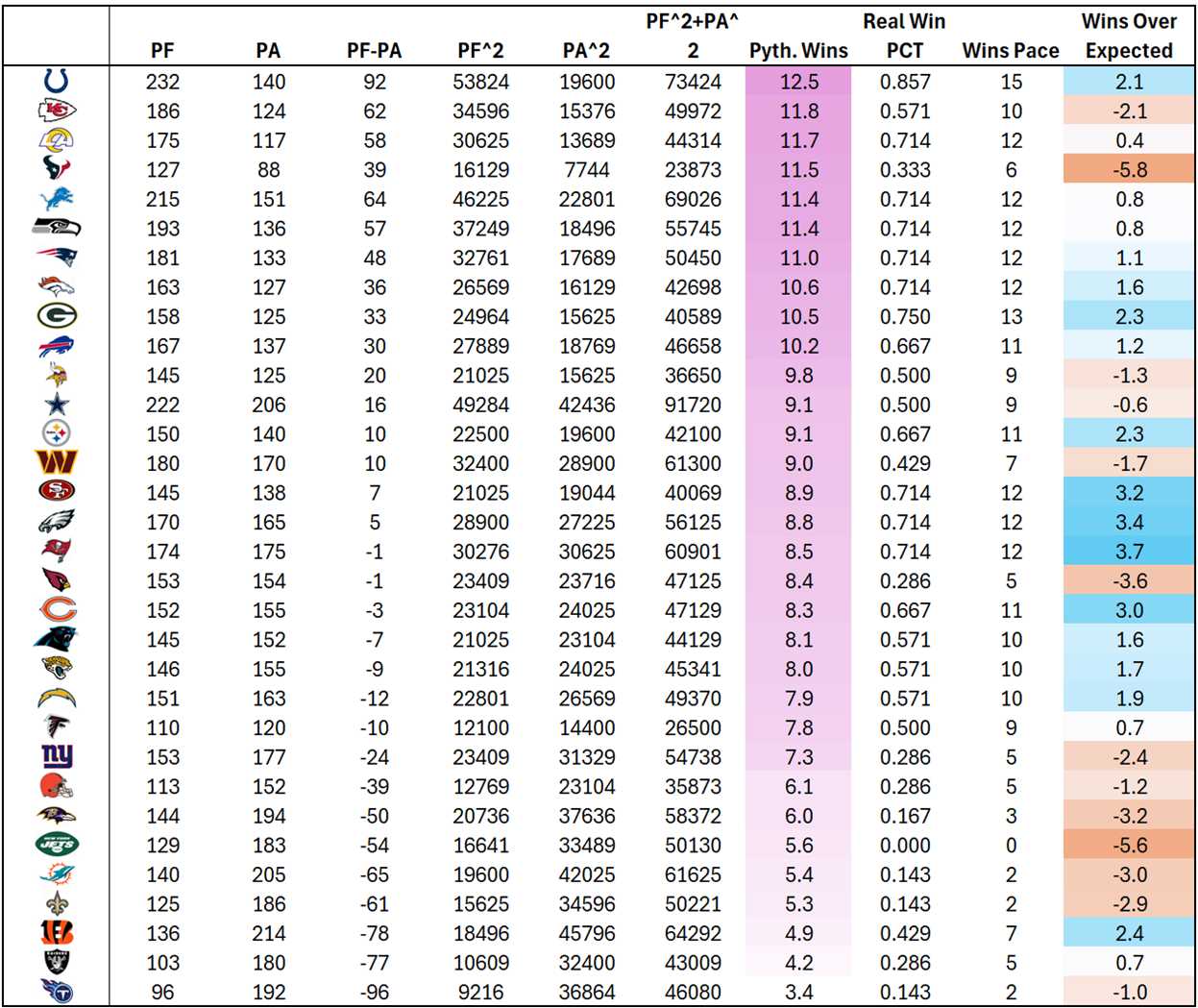
The Packers have one of the most potent offenses in football, ranking fourth in offensive EPA/play and third in offensive success rate.
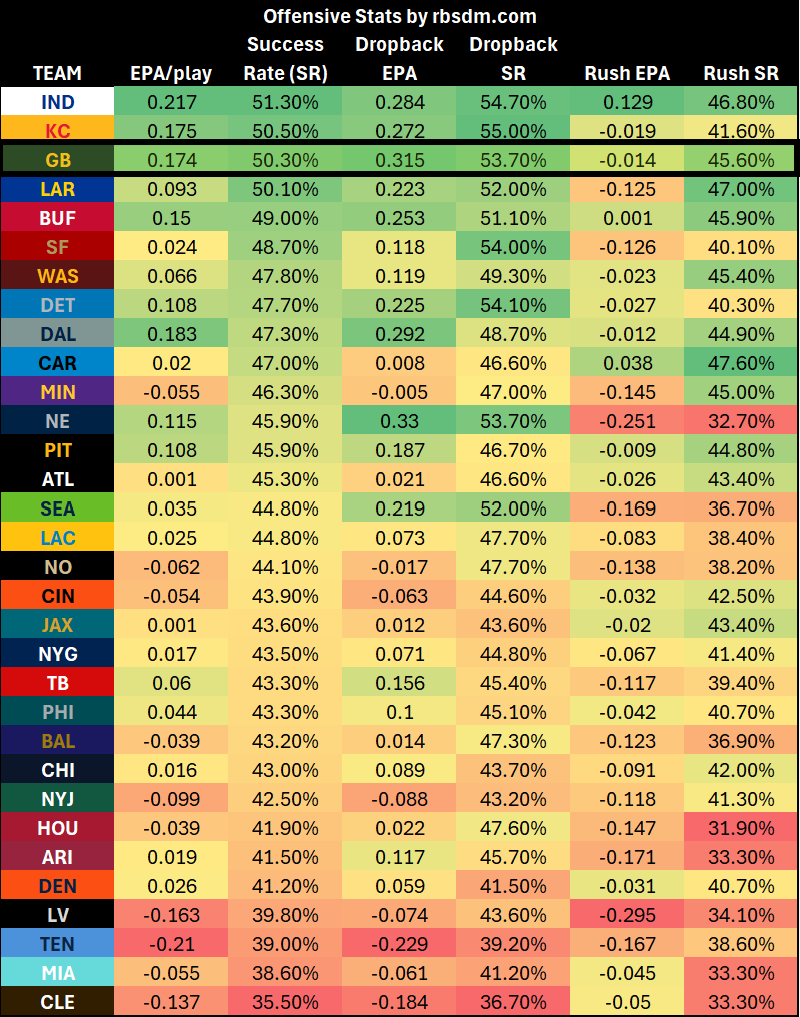
Conversely, the Steelers are far removed from their Steel Curtain/tough-as-nails Rust Belt identity of old, ranking 25th in defensive EPA per play and 19th in defensive success rate. This sets up the visiting Packers to control the narrative whenever they have possession.
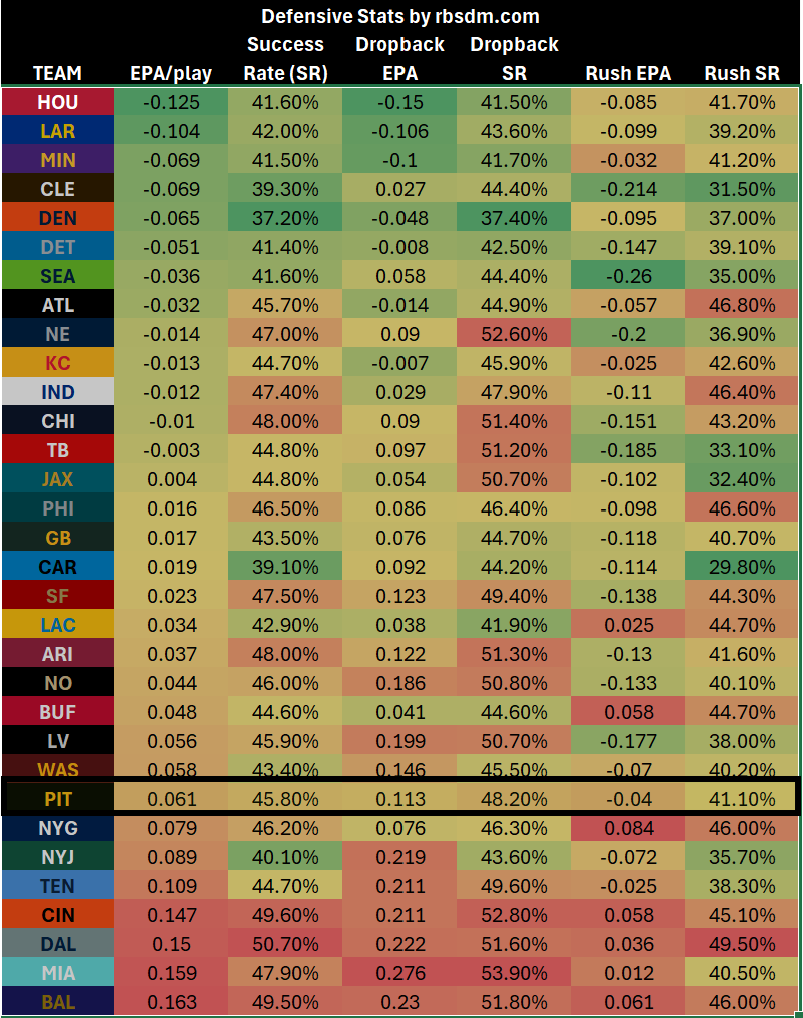
In the past few seasons, the Packers have maintained a negative pass rate over expected (PROE), and this year is no exception. At -3.2% PROE, indicating neutral-script run-heaviness, they rank only 22nd. For additional context, they were at -8.3% PROE in 2024 (30th), so while they are run-heavy compared to expectations, they are less so than they were a year ago.
They continue to move at a relatively slow pace (28 seconds per snap, 26th), a hallmark of HC Matt LaFleur’s playcalling, and their play volume remains low at 62 offensive snaps per 60 minutes (T-23rd). As such, QB Jordan Love has averaged 33.7 dropbacks per game (25th).
Offset by low volume, Love has been almost objectively good, posting the NFL’s second-best EPA + CPOE composite, according to rbsdm.com.
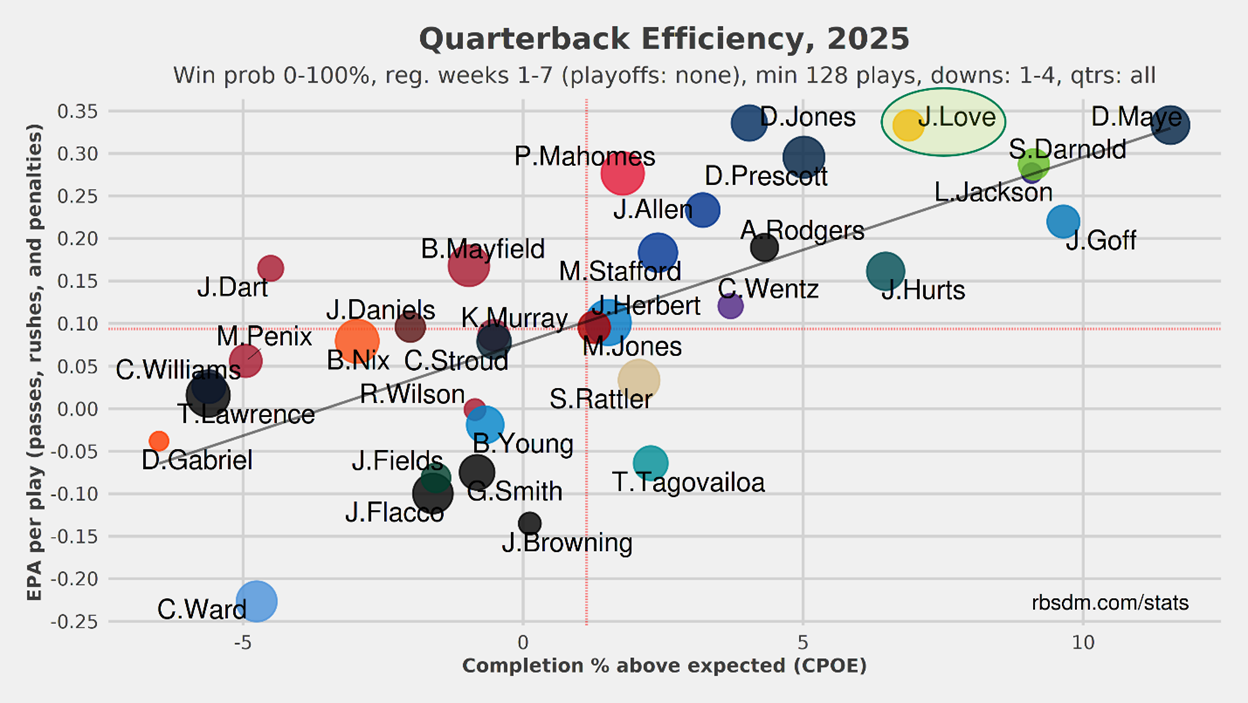
Love’s stats are all pretty aligned with his last two seasons as the Packers’ starter. His efficiency is up from 2024 (which was up from 2023), but generally, his attempts, yardage, completion percentage, and TD rate are very similar to what they have been. And so, same as it ever was, Love is apparently a productive QB undercut by low volume.
Unfortunately, Love has to keep this type of efficacy to maintain fantasy relevance in a system that begins with a low play count and is saturated by a high run rate. Fortunately, his outputs seem stable over a three-year window as the Packers starter, so we very much know what we’re dealing with at this point—a back-end QB1 or front-end QB2 when healthy.
The Packers run a famously broad target dispersion. Like with Love, this complicates playing anyone from this passing attack, as there is already a small pie to divvy up; when four receiving options are between 15% and 22% share on such low volume, each is relying on variance to work in their favor, so playing a Packers’ pass-catcher is like roulette.
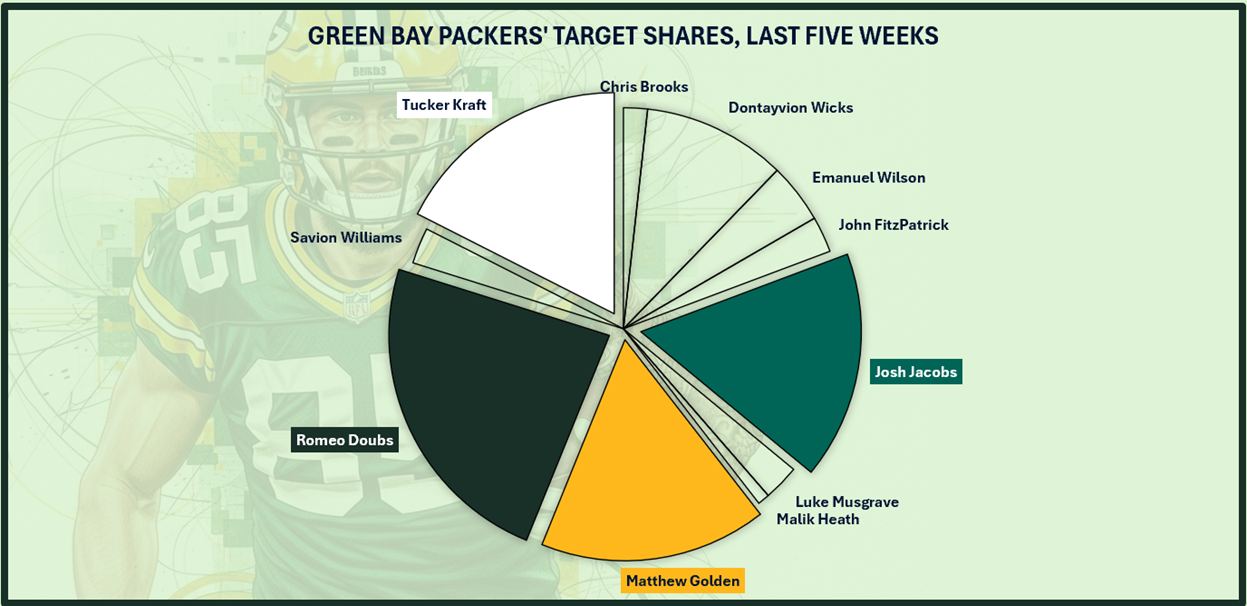
Things could become even more complicated by the potential return of WR Christian Watson, who tore his ACL in the last game of the 2024 season, but will make his 2025 debut Sunday night. While it would undoubtedly take stones to put Watson in a lineup if he were active, his presence would likely further suppress the others' volume.
The Steelers run the fifth-highest rate of man defense (36.2%) and second-highest rate of single-high safety (61.9%). Their most popular alignments, unsurprisingly, are Cover 1 (27.6%) and Cover 3 (33.6%), which are single-high man and zone sets, respectively. They have no other defensive alignment that they line up in more than 11%. Following Minnesota’s game on Thursday night, the Steelers now blitz the second-most in the league (33.1%).
According to Fantasy Points’ coverage matchup tool, Love should enjoy a bump of about +7.3% against the types and rates of coverage the Steelers use, ranking as the seventh-best matchup of the week. Against the specific personnel of the Steelers, Love’s matchup rates as fair, according to PFF’s matchup tool, which is player-based.
WR Romeo Doubs and TE Tucker Kraft are expected to have favorable matchups based on the types and rates of coverage the Steelers employ, while Kraft and WR Matthew Golden’s matchups rate as good according to PFF’s matchup tool.
According to Fantasy Points’ OL/DL matchups tool, the Packers are slated to enjoy a slight advantage in run blocking and a slight disadvantage in pass blocking. As of now, their star RT Zach Tom (back) is off the injury report after limited participation all week, so they are firing on all cylinders. While their disadvantage in pass-blocking should be considered minimal, Love struggles against pressure as much as anyone in the NFL, and his 38.1 QB rating under pressure is third-worst, better than only Geno Smith and Cam Ward.
Kraft seems like the most locked-in start of all the Packers’ pass-catchers, but even he is pretty TD dependent. He still ranks just 11th in first-read percentage (19.0%) and 20th in targets per route run (TPRR). On such low volume, he is unreliable, supported by his 58.1 expected fantasy points (XFP, 16th) according to Fantasy Points. Even so, he is a threat to produce spikes based on his 32.79 EPA per play (3rd), according to Sümer Sports. Much of this is related to his ability after the catch (9.2 YAC/rec, 1st) and TD production (4, T-3rd), both of which are volatile on smaller sample sizes.
One player, made slightly more interesting by the Steelers' style of defense, is Golden. We know that the weakness of single-high defensive alignments lies downfield along the sidelines. Among players with at least ten routes on the deep right and deep left areas of the field (Golden has 13), he ranks fifth among WRs in fantasy points per route run (FP/RR). With his elite speed, this is an intriguing setup for explosives.
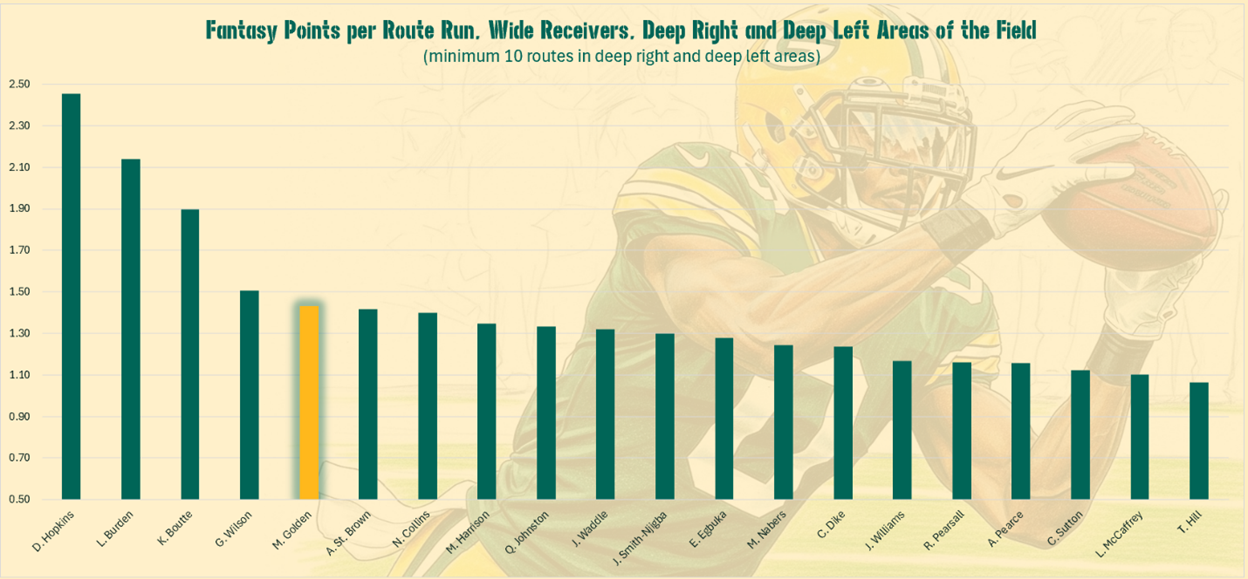
It should be clearly stated that this is borderline speculative, and relying on long scores near the boundaries, in case a particular combination of factors aligns, is unstable. However, it is worth noting that the factors are more likely to align to create such a combination in this case, and that Golden has the potential to capitalize on that more than most. So, while Doubs and Kraft probably make for more dependable plays, Golden presents an interesting high-upside dart throw.
RB Josh Jacobs continues to nurse a calf injury. Despite logging limited practices all week, he is now destined to play (there were even reports he’s currently begging for more reps). He's off the injury report; as for whether he's managed, we’ll have to wait and see.
Jacobs is one of the most reliable fantasy RBs of the past three seasons, and he’s again third in PPR/G. He has the fourth-most carries, ninth-most opportunities, and 10th-most high-value touches (HVT) among RBs, and the Packers rank fifth in offensive rush success rate, so he’s money from a volume and usage standpoint. His efficiency depends on the tool you use to measure it: he’s highly positive in RotoViz’s fantasy points over expected (FPOE), slightly negative in Sümer Sports’ expected points added (EPA), and highly negative in Next Gen’s rushing yards over expected (RYOE).
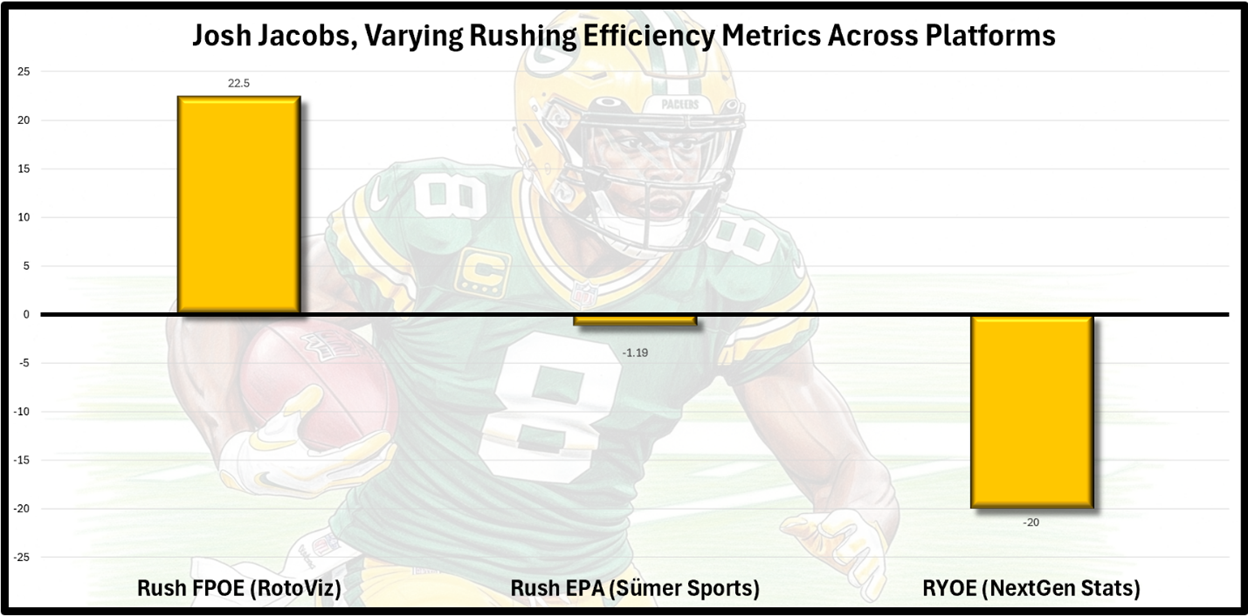
RYOE measures how many yards a back gains versus what an average runner would gain on the same carries. EPA shows the on-field value of those plays in terms of scoring and drive expectancy, while FPOE compares a player’s fantasy output to what their workload should generate. That’s how a back can be highly negative in RYOE yet highly positive in FPOE (still delivering strong fantasy results through high-leverage touches and touchdowns, even without consistently creating extra yards).
In short, Jacobs is thriving through usage and context more than self-made pop, making him a better bet for steady, bankable production than explosive, week-swinging efficiency.
Pittsburgh has appeared stout against fantasy RBs in their last five outings.
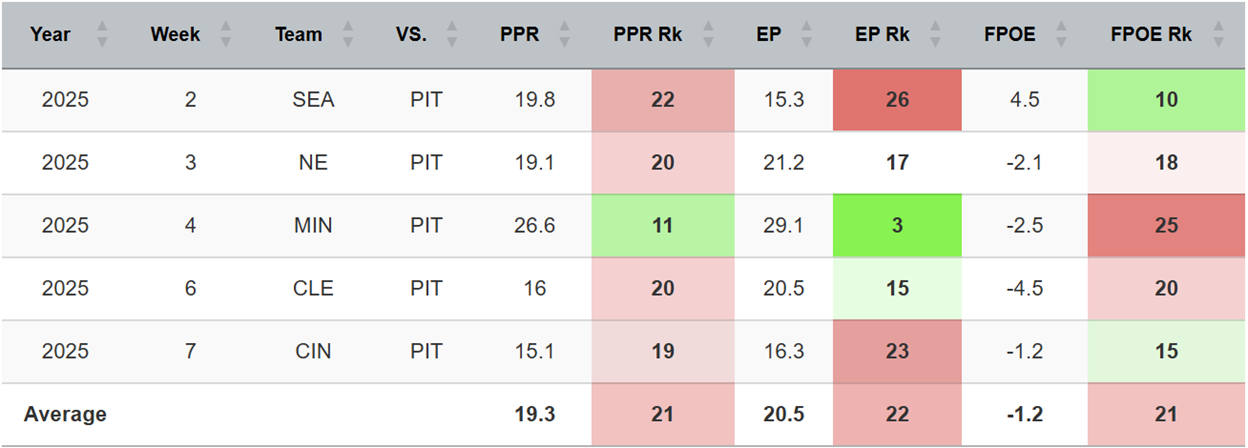
The Steelers haven’t exactly faced a murderer’s row during that span, although they held rookie Quinshon Judkins to his worst rushing performance of his career thus far (12-36-0, 0 recs). They surrendered 108 rushing yards on the ground to Chase Brown a week ago, although 64 of them came on two carries. The EPA stats suggest Pittsburgh is beatable on the ground, and the success rate stuff makes them appear closer to neutral.
